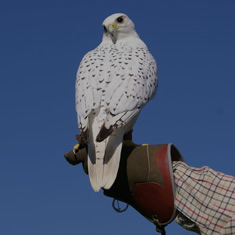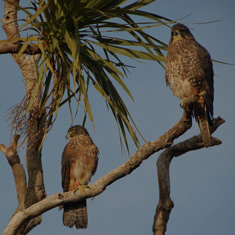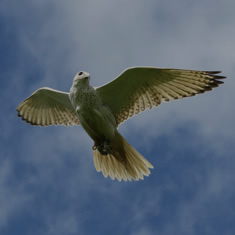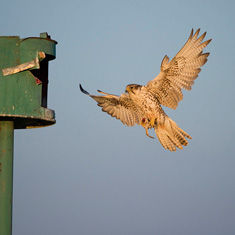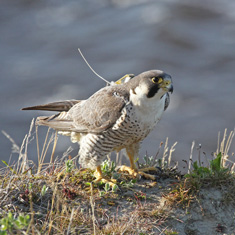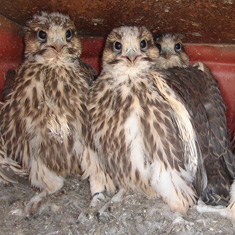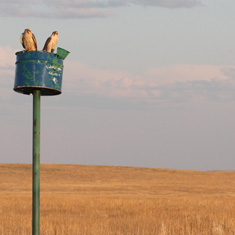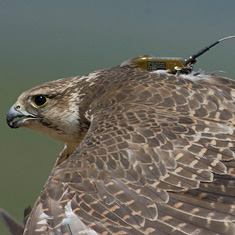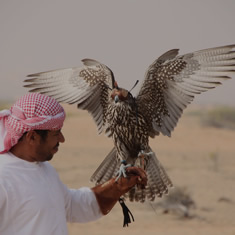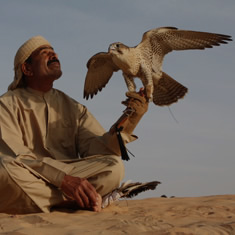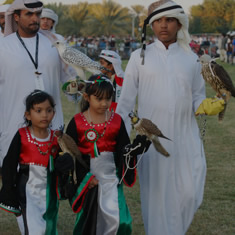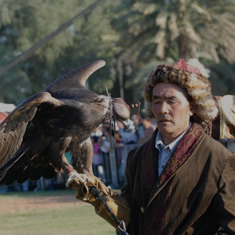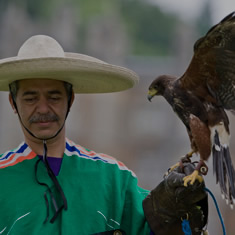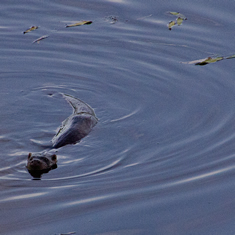- Conservation Status
Conservation and Management
Saker Falcons are classified as ‘Endangered’ on the IUCN Red List and listed on Appendix II of CITES. The species is also listed on Annex I of the EU Birds Directive in Europe.
 |
| Box 1. IUCN criteria used to classify the Saker Falcon as Globally Endangered (EN). |
The global Saker Falcon population was estimated in 1990 to be between 8,500-12,000 pairs and in 2003 it was estimated at 3,600 to 4,000 pairs (Birdlife International, 2006). Due to the tremendous land area of some countries within the range of the Saker Falcon it is very difficult to assess overall population size by country. Data on the status of The Saker Falcon in the early 1990’s is very sparse and in many cases the data used to assess the former status in range countries was essentially little more than a guess. Little has changed in the intervening years and we still have no good measure of Saker Falcon breeding populations for many countries in its Asian breeding range.
A more recent assessment of the population status of the Saker Falcon suggests that the global breeding population lies somwhere between 8,000 to 18,000 breeding pairs (see breeding population estimates).
The classification of the Saker as Endangered has focused conservation efforts and generated funding, particularly in Europe. However, its Endangered status could potentially hinder programmes to develop sustainable harvests for Arabic falconry by reducing opportunities to engage in a legal trade. Uncontrolled and unregulated illegal trade continues, irrespective of the conservation status of the Saker.
Conservation and Research
- Raptor Conservation
- The Peregrine Falcon
- Mauritius Kestrel
- Red Kite Conservation
- New Zealand Falcon Conservation Project
- Migration and Movements of Saker Falcons
- Falcon Genome Project
- Electrocution of Birds of Prey
The Saker Falcon
- The Saker Falcon
- Description
- Taxonomy
- Breeding Distribution
- Breeding Population Estimates
- Wintering Distribution
- Habitat
- Hunting and Diet
- Breeding and Biology
- Migration
- Conservation Status
- Conservation Threats
- Sustainable Harvest
- Conservation overview (HH Sheikh Zayed)
- Captive breeding & research
- Bibliography
- Satellite Tracking
- Reintroduction in Bulgaria
- Reintroduction in Bulgaria
- Mongolian Artificial Nest Project Information
- Mongolian Artificial Nest Project Articles

